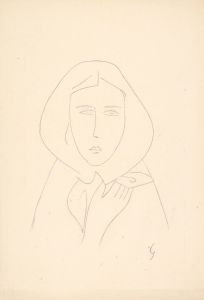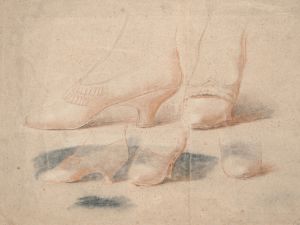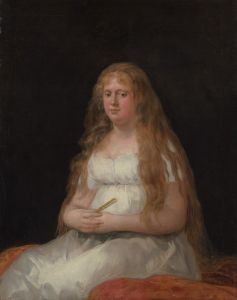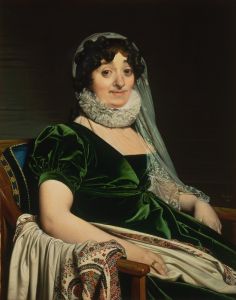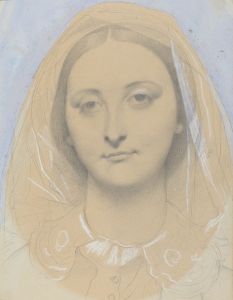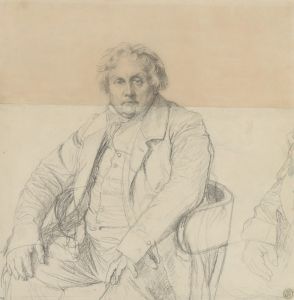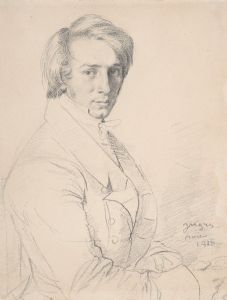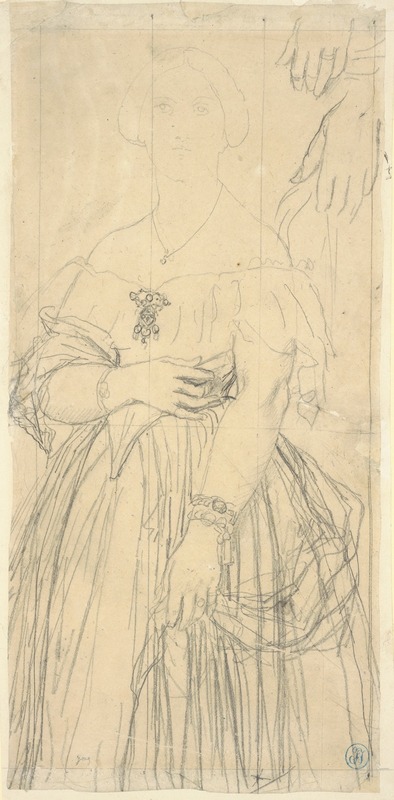
Study for the Dress and the Hands of Madame Moitessier
A hand-painted replica of Jean Auguste Dominique Ingres’s masterpiece Study for the Dress and the Hands of Madame Moitessier, meticulously crafted by professional artists to capture the true essence of the original. Each piece is created with museum-quality canvas and rare mineral pigments, carefully painted by experienced artists with delicate brushstrokes and rich, layered colors to perfectly recreate the texture of the original artwork. Unlike machine-printed reproductions, this hand-painted version brings the painting to life, infused with the artist’s emotions and skill in every stroke. Whether for personal collection or home decoration, it instantly elevates the artistic atmosphere of any space.
Jean Auguste Dominique Ingres, a prominent French Neoclassical painter, is renowned for his meticulous attention to detail and his ability to capture the elegance and refinement of his subjects. One of his notable works, "Study for the Dress and the Hands of Madame Moitessier," showcases his exceptional skill in draftsmanship and his dedication to preparatory studies for his larger compositions.
This particular study is related to one of Ingres' most famous portraits, "Madame Moitessier," which he completed in 1856. The subject of the portrait, Marie-Clotilde-Inès Moitessier, was the wife of a wealthy banker. Ingres was introduced to her in 1844, and he was immediately struck by her classical beauty, which he felt was reminiscent of figures from ancient Roman frescoes. The portrait itself took several years to complete, as Ingres was known for his painstaking process and his commitment to achieving perfection in his work.
The study focuses on the intricate details of Madame Moitessier's dress and hands, elements that are crucial to the overall composition of the final portrait. Ingres' studies often served as a means to explore the textures and forms that he would later incorporate into his paintings. In this study, he meticulously rendered the folds and patterns of the fabric, demonstrating his ability to convey the luxuriousness of the material. The hands, a focal point in many of Ingres' works, are depicted with great care, highlighting his interest in the expressive potential of gesture and form.
Ingres' approach to portraiture was heavily influenced by his admiration for the art of the Renaissance, particularly the works of Raphael. This influence is evident in his emphasis on clarity of line and form, as well as his pursuit of idealized beauty. In "Study for the Dress and the Hands of Madame Moitessier," these qualities are apparent, as Ingres combines precise draftsmanship with a sense of grace and poise.
The study also reflects Ingres' broader artistic philosophy, which prioritized drawing as the foundation of painting. He believed that a strong command of line was essential to capturing the essence of a subject. This belief is exemplified in the careful attention he paid to the contours and details in his preparatory studies, which allowed him to achieve a high degree of realism and subtlety in his finished works.
While the study itself is a work of art, it also provides insight into Ingres' creative process and his methodical approach to portraiture. It reveals the depth of his engagement with his subjects and his commitment to capturing their likeness with both accuracy and elegance. Through studies like this one, Ingres was able to refine his compositions and ensure that every element contributed to the overall harmony and balance of the final piece.
In summary, "Study for the Dress and the Hands of Madame Moitessier" is a testament to Jean Auguste Dominique Ingres' skill as a draftsman and his dedication to the art of portraiture. It exemplifies his meticulous approach to capturing the beauty and refinement of his subjects, as well as his commitment to the principles of Neoclassicism. Through this study, viewers can gain a deeper appreciation for the artistry and craftsmanship that define Ingres' work.





